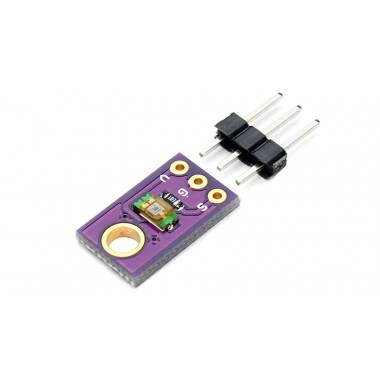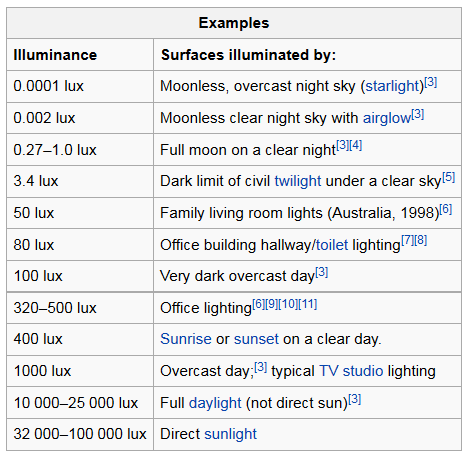Productos
CJMCU-TEMT6000 light sensor

OFERTA POR RENOVACION DE STOCK!!! Sensor de luz TEMT6000. El mismo ofrece una salida analógica proporcional a la intensidad de la luz incidente.
COD: HTHS0225
Peso: 0.001 Kg
Disponibilidad: En Stock
ARS 2990.00
El producto no está disponible para la venta en este momento
Características
Description:
Basic breakout board for the TEMT6000 Ambient Light Sensor. Only what you need, nothing you don’t. Sensor acts like a transistor - the greater the incoming light, the higher the analog voltage on the signal pin.
As the name suggests, the TEMT6000 Light Sensor will detect the brightness of its surroundings. While there are many properties of light that can help us categorize its brightness, the TEMT6000 measures illuminance (measured in lux (lx), often denoted Ev). Don’t worry if illuminance is new to you though, the TEMT6000 is very intuitive to use: brighter = more current, darker = less current.
In this guide, we’ll show you how to quickly get the ambient light sensor breakout up and running, then discuss some of the more technical details of how it functions. After that, we’ll show you how to use it to make a practical DIY nightlight!
the TEMT6000 measures illuminance. If you’re unfamiliar with illuminance, it is a measure of the total quantity of visible light emitted by a source (referred to as luminous flux, measured in lumens (lm)) divided by an area in square meters. More notationally, 1 lx = 1 lm/m². Along with these, there are other properties of light that are unfortunately all named using the same Latin root for light, so it can be hard to keep them straight. Here’s a diagram to hopefully elucidate the differences:
Diagram depicting the nuances between the various measurements of light.
Why does the TEMT6000 measure illuminance? In most practices, measuring the intensity of light without factoring in distance is very difficult, and puzzled early astronomers for a long time. In short, there is apparent magnitude (how bright a source appears) and absolute magnitude (how bright the source actually is). Two sources of different absolute magnitudes can have the same apparent magnitude depending on their distance from the observer.
For example, if you have a bright source far away and a dim source very close, they can appear to have the same brightness because the brighter source’s light will have to dissipate over a larger volume. This is why the sensor will read a smaller value if you move the same source of light farther away from it, essentially increasing the amount of space that the same amount of light has to fill between the source and the sensor (i.e. reducing the illuminance, as you’re dividing by a larger surface area of the light-sphere generated by the source).
Here is a graphical relationship between the current (in µA) and illuminance of the immediate vicinity perceived by the sensor:
Found in the TEMT6000 datasheet.
The TEMT6000 only recognizes light with wavelengths in the range of 390–700 nm, which roughly covers the entire spectrum of visible light. In other words, this won’t pick up infrared, ultraviolet, or any other light we can’t directly see.
Here’s a table of the typical illuminance from common sources of visible light:







